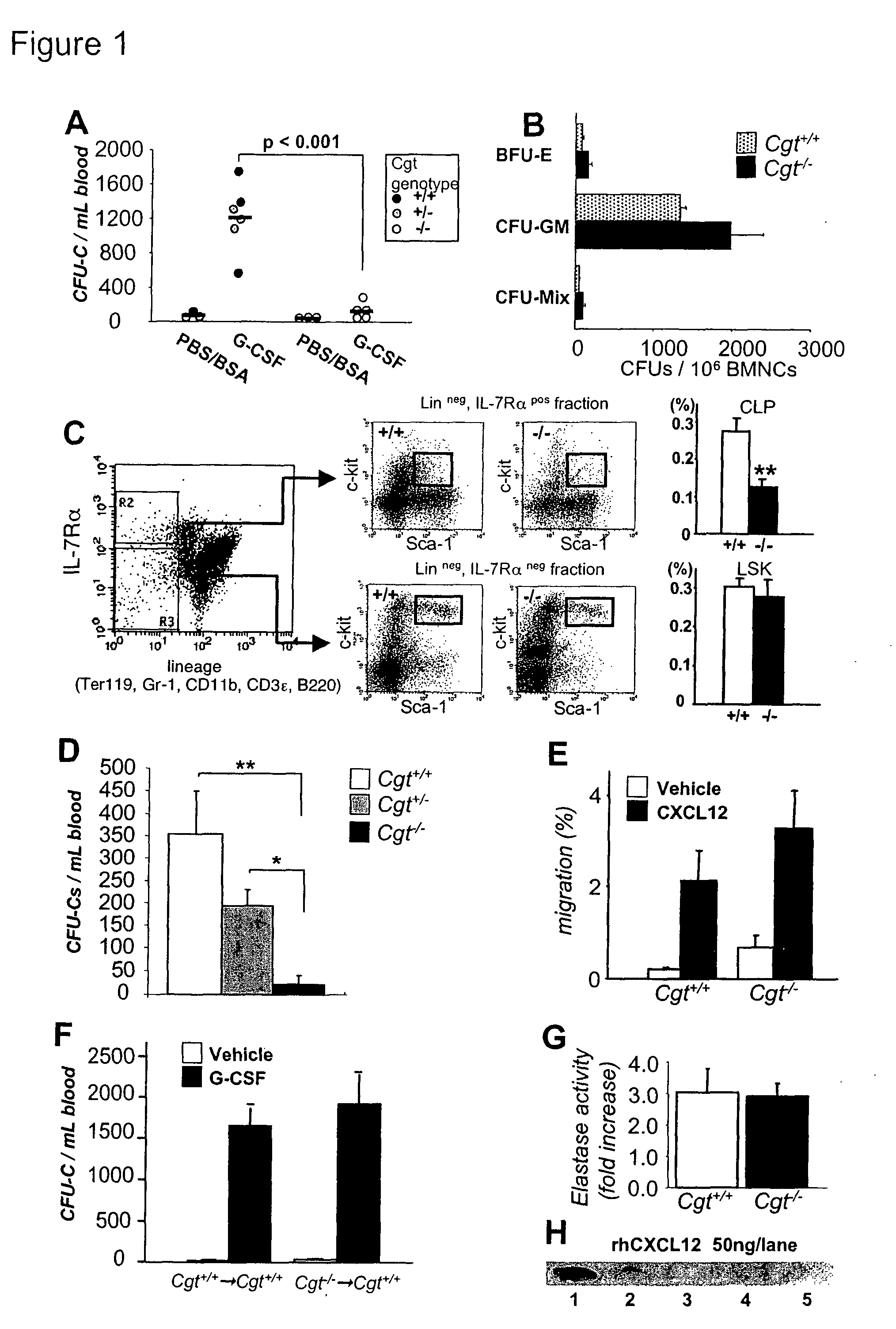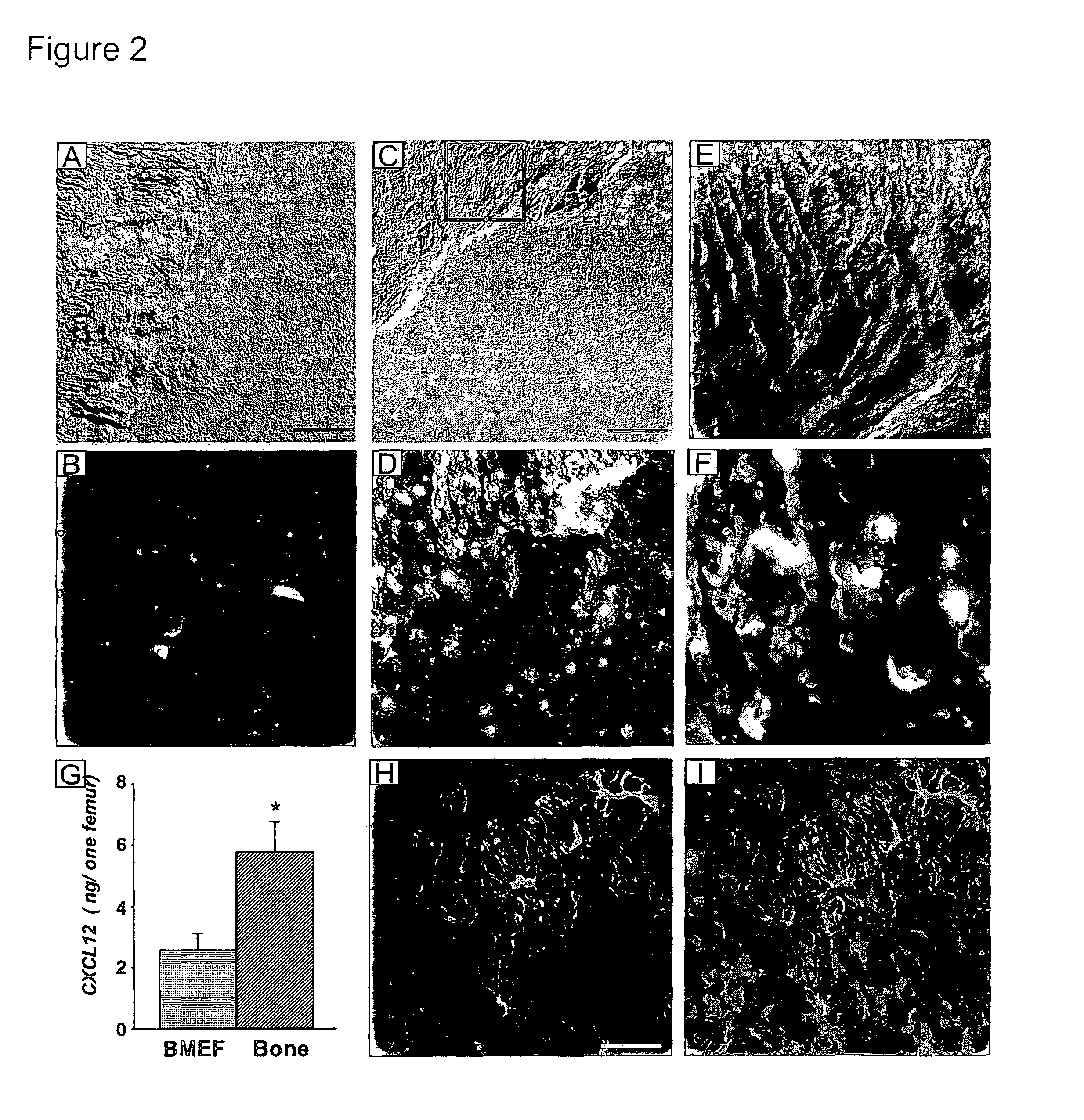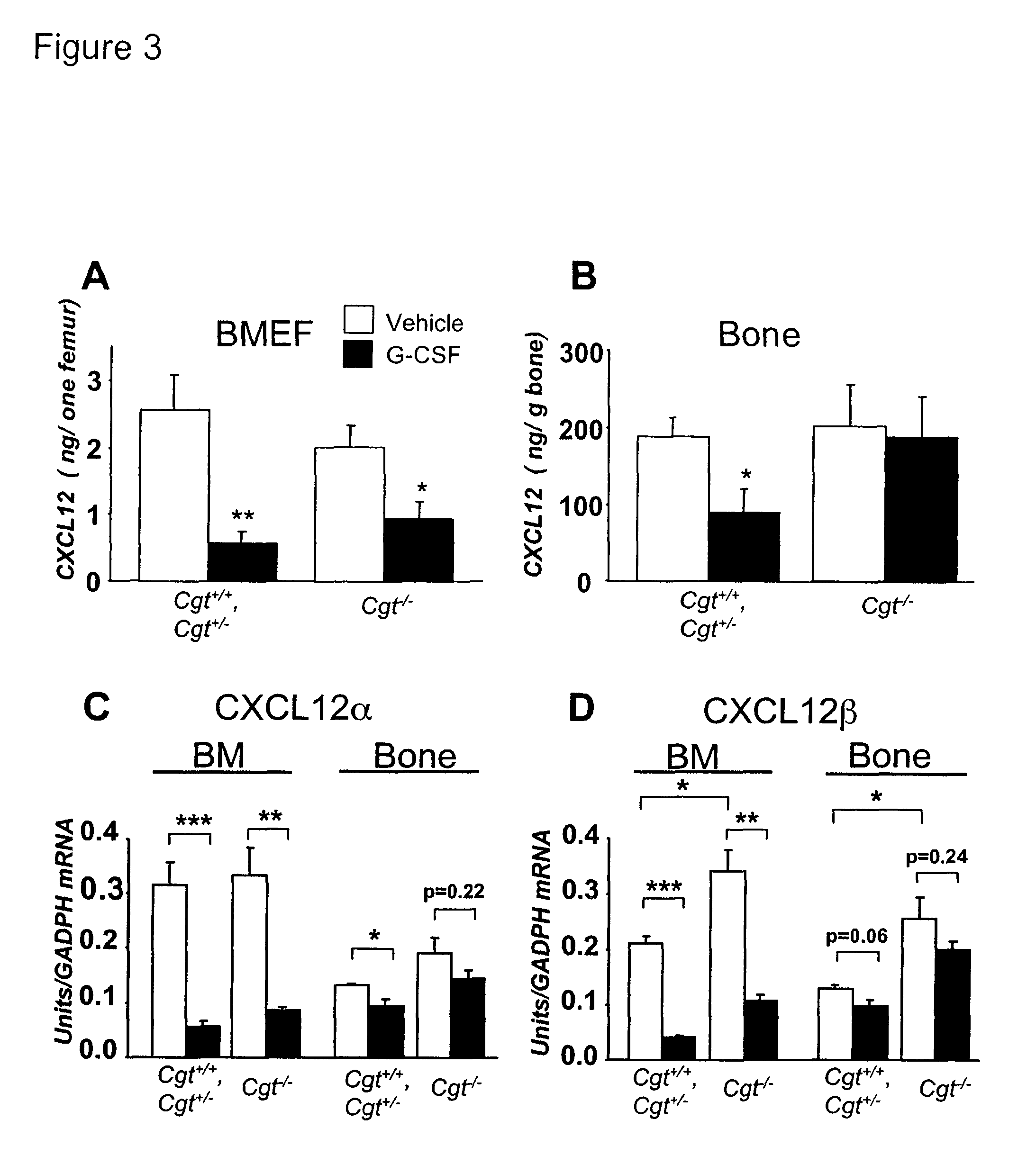Methods and compositions for modulating the mobilization of stem cells
a technology of stem cells and compositions, applied in the direction of drug compositions, peptides, enzymology, etc., can solve the problems of loss of immune system function in these patients, pathological impact of such treatments on rapidly dividing normal cells, and the function of these proteases, so as to reduce the need for large-scale harvesting of marrow or multiple leukopheresis, prevent hematopoietic cell depletion, and reduce the effect o
- Summary
- Abstract
- Description
- Claims
- Application Information
AI Technical Summary
Benefits of technology
Problems solved by technology
Method used
Image
Examples
example 1
Mobilization is Severely Impaired in Cgt− / − Mice
[0356]Cgt littermates were treated with G-CSF to elicit HSPCs from the BM. Strikingly, there was little mobilization in Cgt− / − mice compared to Cgt+ / − or + / + littermates (FIG. 1A). The reduction of circulating HSPCs in Cgt− / − mice was not due to lower numbers of progenitors (FIG. 1B) or stem cells [FIG. 1C and [see (Katayama, Y., and Frenette, P. S. (2003). Galactocerebrosides are required postnatally for stromal-dependent bone marrow lymphopoiesis. Immunity 18, 789-800) for competitive reconstitution] in the BM. However, the number of common lymphoid progenitor (CLP) cells (Kondo, M., Weissman, I. L., and Akashi, K. (1997). Identification of clonogenic common lymphoid progenitors in mouse bone marrow. Cell 91, 661-672) was significantly reduced in Cgt− / − mice compared to Cgt+ / + littermates (FIG. 1C), indicating that the previously reported block in lymphoid differentiation (Katayama, Y., and Frenette, P. S. (2003). Galactocerebrosides...
example 2
The Mobilization Defect Originates from the Stromal Compartment
[0358]It has been reported that HIV-1 entry into human intestinal epithelial cell lines can be blocked by either anti-GalCer or anti-CXCR4 mAbs, suggesting that CXCR4 can cooperate with GalCer during the fusion process (Delezay, O., Koch, N., Yahi, N., Hammache, D., Tourres, C., Tamalet, C., and Fantini, J. (1997). Co-expression of CXCR4 / fusin and galactosylceramide in the human intestinal epithelial cell line HT-29. Aids 11, 1311-1318). We assessed the migration of Cgt− / − BM mononuclear cells toward CXCL12 to investigate whether the mobilization defect arose from CXCR4 dysfunction on Cgt− / − hematopoietic cells. However, Cgt− / − and + / + cells did not differ in CXCL12-mediated migration (FIG. 1E).
[0359]To evaluate further whether the defect in HSPC mobilization observed in Cgt− / − mice could originate from hematopoietic cells, Cgt+ / + or − / − BM nucleated cells (BMNCs; CD45.2+) were transplanted into lethally irradiated wild-...
example 3
G-CSF-induced Bone Marrow Proteolytic Activity is Preserved in Cgt− / − Mice
[0360]Previous studies have revealed that G-CSF induces proteolytic activity in the extracellular BM microenvironment, and that the released proteases, most notably neutrophil elastase, may play an important role in mobilization (Petit, I., Szyper-Kravitz, M., Nagler, A., Lahav, M., Peled, A., Habler, L., Ponomaryov, T., Taichman, R. S., Arenzana-Seisdedos, F., Fujii, N., et al. (2002). G-CSF induces stem cell mobilization by decreasing bone marrow SDF-1 and up-regulating CXCR4. Nat Immunol 3, 687-694; Levesque, J. P., Hendy, J., Takamatsu, Y., Simmons, P. J., and Bendall, L. J. (2003). Disruption of the CXCR4 / CXCL12 chemotactic interaction during hematopoietic stem cell mobilization induced by GCSF or cyclophosphamide. J Clin Invest 111, 187-196). We found that neutrophil elastase activity in supernatants from phorbol-myristate acetate (PMA)-activated BMNCs was similar for Cgt+ / + and − / − littermates (FIG. 1G)...
PUM
| Property | Measurement | Unit |
|---|---|---|
| time | aaaaa | aaaaa |
| width | aaaaa | aaaaa |
| molecular weight | aaaaa | aaaaa |
Abstract
Description
Claims
Application Information
 Login to View More
Login to View More - R&D
- Intellectual Property
- Life Sciences
- Materials
- Tech Scout
- Unparalleled Data Quality
- Higher Quality Content
- 60% Fewer Hallucinations
Browse by: Latest US Patents, China's latest patents, Technical Efficacy Thesaurus, Application Domain, Technology Topic, Popular Technical Reports.
© 2025 PatSnap. All rights reserved.Legal|Privacy policy|Modern Slavery Act Transparency Statement|Sitemap|About US| Contact US: help@patsnap.com



